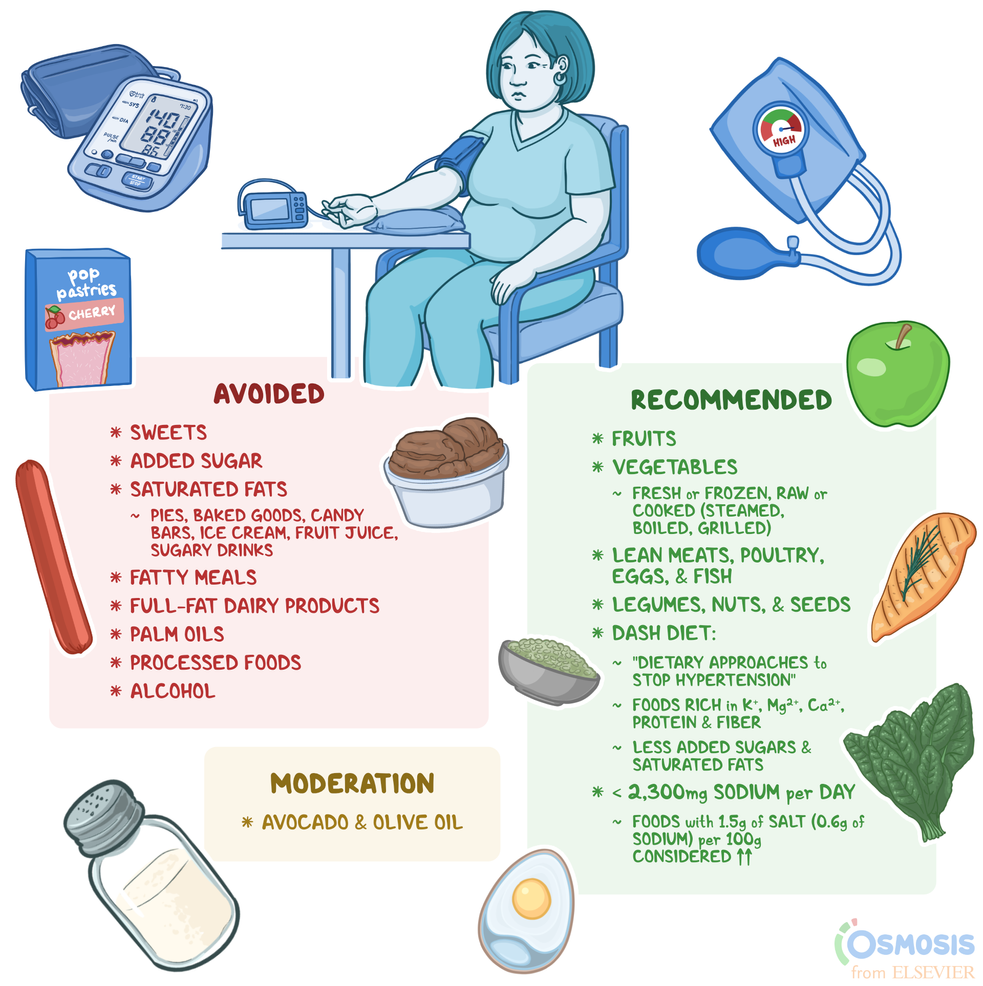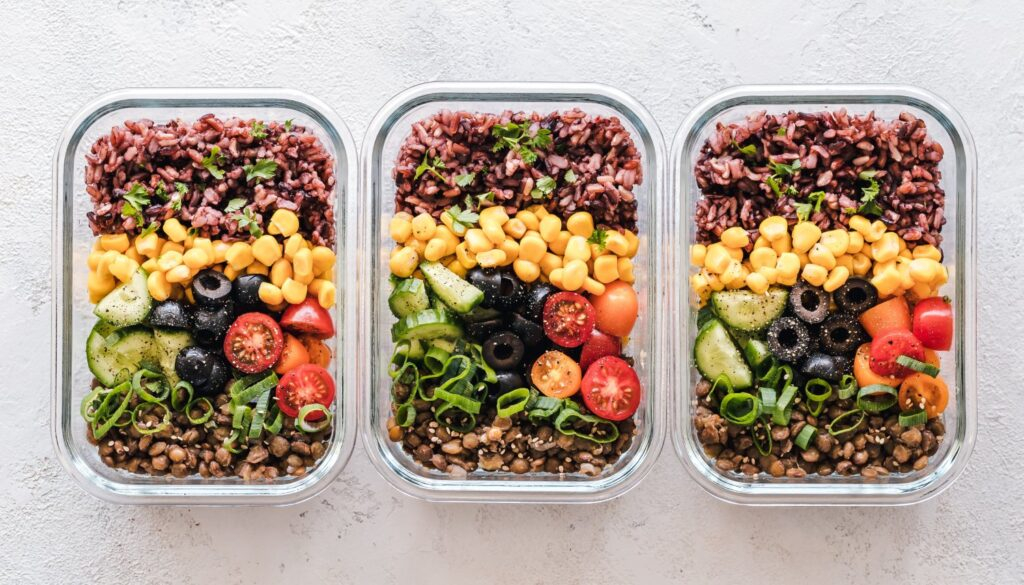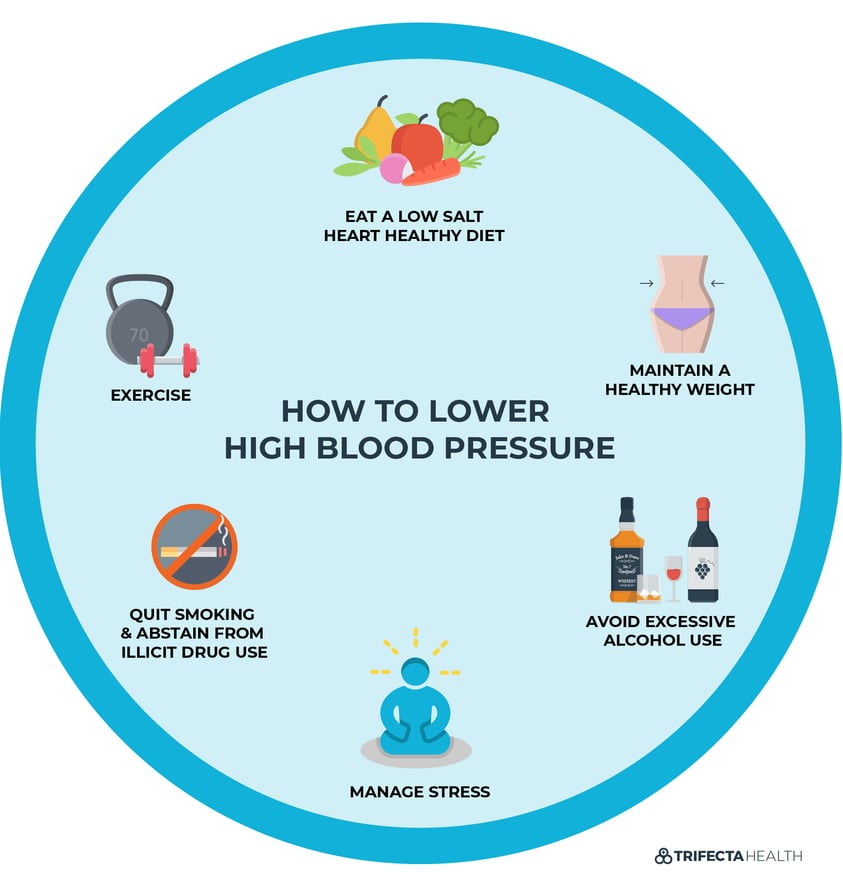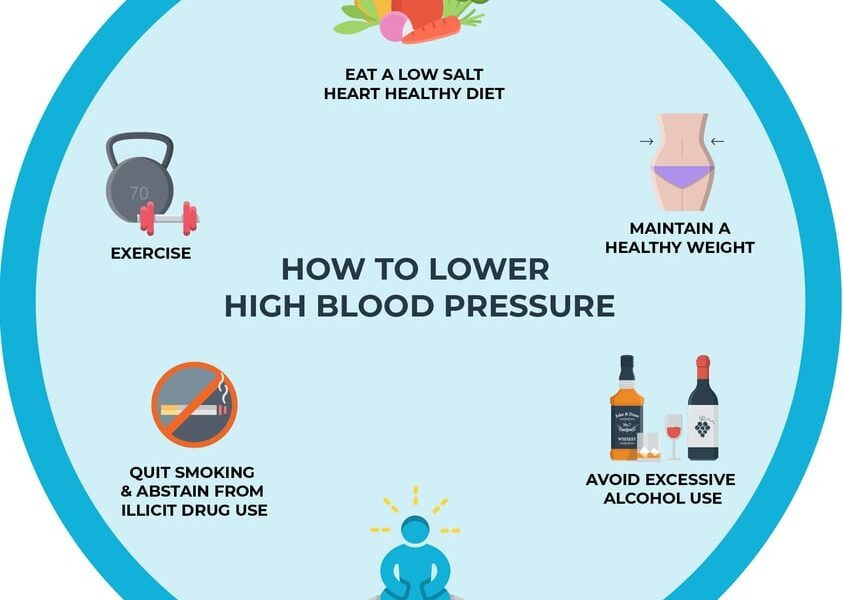The Lose Weight Diet for Managing High Blood Pressure
Are you struggling with high blood pressure and looking for an effective way to manage it? Look no further than the Lose Weight Diet. Combining the dual benefits of weight loss and blood pressure control, this diet offers a comprehensive approach to improving your health. By shedding excess pounds, you can reduce the strain on your cardiovascular system and lower your blood pressure naturally. Discover how the Lose Weight Diet can empower you to take control of your health and achieve a healthier, more balanced life.

Understanding High Blood Pressure
What is high blood pressure?
High blood pressure, also known as hypertension, is a condition in which the force of blood against the walls of your arteries is consistently too high. This can put extra strain on your heart and blood vessels, leading to various health problems if left untreated. Blood pressure is measured using two numbers – systolic pressure and diastolic pressure. A normal blood pressure reading is considered to be around 120/80 mmHg. When the reading consistently reaches 130/80 mmHg or higher, it is classified as high blood pressure.
Causes of high blood pressure
There are several factors that can contribute to the development of high blood pressure. Some of the common causes include:
- Family history: If your parents or close relatives have high blood pressure, you may be at a higher risk of developing it.
- Age: As you get older, the risk of high blood pressure increases.
- Unhealthy lifestyle: Poor diet, lack of physical activity, excessive alcohol consumption, and smoking can all lead to elevated blood pressure levels.
- Chronic conditions: Certain medical conditions like kidney disease, diabetes, and sleep apnea can contribute to high blood pressure.
- Stress: Chronic stress can affect your blood pressure levels.
The link between weight and blood pressure
Research has shown a strong link between weight and blood pressure. Being overweight or obese can increase your risk of developing high blood pressure. When you carry excess weight, your heart has to work harder to pump blood throughout your body, leading to higher blood pressure. Additionally, excess body fat can increase inflammation and insulin levels, further contributing to hypertension. By adopting a healthy weight management approach, such as the Lose Weight Diet, you can effectively manage your blood pressure and reduce the risk of complications.
The Lose Weight Diet Approach
Introduction to the Lose Weight Diet
The Lose Weight Diet is a sustainable and flexible approach to weight loss that focuses on creating a calorie deficit by making smart food choices, following a balanced diet, engaging in regular physical activity, and implementing healthy lifestyle changes. Unlike fad diets that promise quick results, the Lose Weight Diet emphasizes long-term success and overall well-being.
Why the Lose Weight Diet is effective for managing blood pressure
The Lose Weight Diet is particularly effective for managing high blood pressure due to its emphasis on weight loss. By shedding excess pounds, you can significantly reduce the strain on your heart and blood vessels, leading to lower blood pressure levels. Moreover, this diet encourages the consumption of nutrient-dense foods, which can help support healthy blood pressure levels and overall cardiovascular health.
Key principles of the Lose Weight Diet
The Lose Weight Diet follows several key principles that are essential for successful weight management and blood pressure control:
- Calorie control: Creating a calorie deficit by consuming fewer calories than you burn is crucial for weight loss. This can be achieved by monitoring portion sizes and choosing lower-calorie options.
- Balanced diet: Eating a variety of foods from all food groups ensures that you receive essential nutrients while keeping your calorie intake in check.
- Physical activity: Regular exercise not only aids in weight loss but also helps lower blood pressure. Aim for at least 150 minutes of moderate-intensity aerobic activity per week.
- Mindful eating: Paying attention to your hunger and fullness cues, eating slowly, and savoring your meals can help prevent overeating and promote better digestion.
- Lifestyle changes: Adopting healthy habits, managing stress, getting enough sleep, and avoiding smoking and excessive alcohol consumption are crucial factors in long-term weight management and blood pressure control.
Balanced and Nutritious Eating
Importance of a balanced diet
A balanced diet plays a vital role in weight management and blood pressure control. It involves consuming a variety of foods from different food groups in appropriate proportions to ensure you receive all the necessary nutrients while managing your calorie intake. A well-balanced diet consists of fruits, vegetables, whole grains, lean proteins, and healthy fats.
Recommended calorie intake for weight loss
To lose weight and manage blood pressure effectively, it’s important to create a calorie deficit. A general guideline for weight loss is to consume 500 to 1,000 fewer calories than your usual daily intake. However, it’s crucial to consult with a healthcare professional or registered dietitian to determine an appropriate calorie range based on your individual needs, activity level, and overall health.
Choosing nutrient-dense foods
Nutrient-dense foods are rich in essential nutrients while being relatively low in calories. These foods are essential for maintaining overall health, managing weight, and controlling blood pressure. Examples of nutrient-dense foods include fresh fruits and vegetables, whole grains, lean proteins like poultry and fish, low-fat dairy products, and healthy fats such as avocados and nuts.
Incorporating fruits and vegetables
Fruits and vegetables are excellent choices for weight loss and blood pressure management due to their low calorie and sodium content, high fiber content, and abundance of vitamins and minerals. Aim to include a variety of colorful fruits and vegetables in your daily meals and snacks. They can be enjoyed fresh, frozen, or even as ingredients in smoothies, salads, stir-fries, and soups.
Opting for whole grains
Whole grains are a healthier alternative to refined grains as they contain all parts of the grain, including the bran, germ, and endosperm. This means they retain valuable nutrients like fiber, B vitamins, and minerals. By choosing whole grains such as brown rice, quinoa, whole wheat bread, and oatmeal over refined grains, you can promote weight loss, regulate blood sugar levels, and improve heart health.
Including lean proteins
Protein is an essential macronutrient that helps build and repair tissues, promotes satiety, and supports muscle growth. When following the Lose Weight Diet, it’s important to include lean protein sources, such as skinless poultry, fish, legumes, tofu, and low-fat dairy products. These options are lower in saturated fat and calories, making them ideal for weight loss and blood pressure control.
Limiting sodium intake
Excessive sodium consumption can contribute to high blood pressure by causing water retention and increasing the volume of blood in your body. To manage blood pressure effectively, limit your sodium intake by avoiding processed and packaged foods, reducing the use of added salt in cooking, and opting for natural herbs, spices, and sodium-free seasonings to enhance the taste of your meals.
Meal Planning and Portion Control
Benefits of meal planning
Meal planning is a valuable tool for weight loss and blood pressure management. It involves prepping and organizing your meals ahead of time, which can save both time and money. By planning your meals in advance, you can make healthier choices, control portion sizes, avoid impulsive food decisions, and ensure a well-balanced diet throughout the week.
Creating a meal plan for weight loss
When creating a meal plan for weight loss, it’s important to consider your calorie needs, dietary preferences, and nutritional requirements. Start by determining your daily calorie target, and then distribute your calories across three main meals and two or three snacks to keep your metabolism active and prevent energy dips. Incorporate a variety of nutrient-dense foods, including lean proteins, whole grains, fruits, vegetables, and healthy fats, into your meals.
Understanding portion sizes
Portion control plays a crucial role in weight management. Overeating, even with healthy foods, can hinder weight loss efforts. Understanding portion sizes can help you maintain a calorie deficit and support your weight loss goals. Use measuring cups, a food scale, or visual cues to estimate appropriate portion sizes for different food groups. Over time, this practice can become more intuitive.
Practical portion control tips
Here are some practical tips to help you practice portion control:
- Use smaller plates and bowls to make your portions appear larger.
- Fill half of your plate with non-starchy vegetables to add volume and fiber to your meals without significantly increasing calorie intake.
- Measure out proper serving sizes of calorie-dense foods like nuts, nut butter, and oils to avoid unintentional overconsumption.
- Be mindful of portion sizes when dining out. Consider sharing a meal or asking for a half-sized portion.

Physical Activity and Exercise
The role of physical activity in managing blood pressure
Physical activity plays a critical role in managing blood pressure levels and supporting weight loss efforts. Regular exercise helps strengthen the heart, improve blood flow, lower blood pressure, and reduce the risk of cardiovascular diseases. It also boosts metabolism, aids in weight loss, improves mood, and enhances overall well-being.
Types of exercises for weight loss
When aiming for weight loss, incorporating a combination of aerobic exercises and strength training is highly recommended. Aerobic exercises, such as brisk walking, jogging, cycling, swimming, and dancing, help burn calories and improve cardiovascular health. Strength training exercises, including weightlifting and resistance band workouts, help build lean muscle mass, increase metabolism, and enhance overall strength and tone.
Creating an exercise routine
To create an exercise routine that supports weight loss and blood pressure management, consider the following:
- Set realistic goals: Start with achievable targets and gradually increase the intensity and duration of your workouts.
- Frequency: Aim for at least 150 minutes of moderate-intensity aerobic activity or 75 minutes of vigorous-intensity aerobic activity each week. Include strength training exercises twice a week.
- Variety: Engage in different activities to prevent boredom and work different muscle groups.
- Progression: Gradually increase the intensity and duration of your workouts to challenge your body and continue making progress.
Tips for staying motivated
Staying motivated to exercise regularly can be challenging, but with the right strategies, it can become a habit. Here are some tips to help you stay motivated:
- Set specific and achievable goals: Having clear objectives can give you something to work towards.
- Find activities you enjoy: Choosing activities that you genuinely enjoy increases the likelihood of sticking with them.
- Enlist a workout buddy: Exercising with a friend or joining group classes can make workouts more enjoyable and provide accountability.
- Track your progress: Keep a workout log or use a fitness tracker to monitor your progress and celebrate your achievements.
- Reward yourself: Treat yourself to non-food rewards when you reach milestones, such as new workout gear or a spa day.
Behavioral Changes and Habit Formation
Identifying triggers and emotional eating
Identifying triggers and emotional eating patterns is crucial for successful weight management and blood pressure control. Emotional eating refers to using food as a coping mechanism for emotions such as stress, boredom, or sadness. By recognizing these triggers, you can develop healthier coping mechanisms and break the cycle of emotional overeating.
Developing healthy habits
Healthy habits are essential for long-term weight management and blood pressure control. By replacing unhealthy behaviors with positive ones, you can create lasting changes. Focus on incorporating small, sustainable habits into your daily routine, such as:
- Drinking plenty of water throughout the day to stay hydrated and promote satiety.
- Eating mindfully and paying attention to your body’s hunger and fullness cues.
- Engaging in regular physical activity or finding ways to incorporate movement into your daily life.
- Prioritizing sleep to support overall health and weight management.
- Managing stress through relaxation techniques, hobbies, or engaging in activities you enjoy.
Smart food choices for long-term success
Building a foundation of smart food choices is crucial for long-term weight management and blood pressure control. Here are some key principles to keep in mind when making food choices:
- Focus on whole, unprocessed foods: Choose foods that are as close to their natural state as possible, as they tend to be more nutrient-dense and lower in added sugars, unhealthy fats, and sodium.
- Be mindful of portion sizes: Even healthy foods can contribute to weight gain if consumed in large quantities.
- Include a variety of fruits and vegetables: They provide essential vitamins, minerals, and antioxidants while being low in calories.
- Prioritize lean proteins: Choose lean cuts of meat, poultry without the skin, fish, beans, lentils, and tofu to obtain essential amino acids without excessive saturated fat.
- Incorporate healthy fats: Include sources of healthy fats, such as avocados, nuts, seeds, and olive oil, in moderation to support satiety and overall health.
Overcoming barriers and setbacks
Throughout your weight loss and blood pressure management journey, you may encounter setbacks and face barriers that hinder your progress. It’s important to approach these challenges with resilience and a positive mindset. Here are some tips for overcoming barriers and setbacks:
- Learn from setbacks: Use setbacks as opportunities for self-reflection and growth. Identify what triggered the setback and implement strategies to avoid it in the future.
- Seek support: Reach out to a support system, whether it’s friends, family, or a healthcare professional, for guidance and encouragement.
- Focus on progress, not perfection: Recognize that progress is not always linear. Celebrate small victories and keep moving forward.
- Stay flexible: Be open to adjusting your goals and approaches as needed to accommodate changes in circumstances or preferences.

Stress Management Techniques
Understanding the impact of stress on blood pressure
Stress can significantly affect blood pressure levels. When you experience stress, your body releases stress hormones that can elevate your blood pressure temporarily. However, chronic stress can lead to long-term increases in blood pressure, contributing to hypertension. Therefore, effective stress management is important for maintaining healthy blood pressure levels.
Effective stress management strategies
Implementing effective stress management strategies can help reduce the impact of stress on blood pressure and improve overall well-being. Here are some strategies to consider:
- Exercise regularly: Engaging in physical activity helps reduce stress hormones and releases endorphins, which are natural mood elevators.
- Practice relaxation techniques: Techniques such as deep breathing exercises, meditation, and yoga can promote relaxation and relieve stress.
- Prioritize self-care: Set aside time for activities that bring you joy and relaxation, such as hobbies, reading, taking a bath, or spending time in nature.
- Get enough sleep: Poor sleep quality or insufficient sleep can worsen stress levels. Make sleep a priority and establish a consistent bedtime routine.
- Seek support: Share your feelings and concerns with trusted friends or family members. Consider talking to a therapist or counselor for professional guidance.
Incorporating relaxation techniques
Incorporating relaxation techniques into your daily routine can help reduce stress levels, lower blood pressure, and improve overall well-being. Here are some relaxation techniques to consider:
- Deep breathing exercises: Practice slow, deep breaths, focusing on filling your abdomen with air and exhaling slowly. Deep breathing helps activate the body’s relaxation response and calms the mind.
- Meditation: Set aside a few minutes each day to meditate. Find a quiet space, close your eyes, and focus on your breath or a specific word or phrase. Meditation helps bring awareness to the present moment and promotes relaxation.
- Yoga: Engage in gentle yoga poses and movements while focusing on your breath. Yoga combines physical movement, stretching, and mindfulness, making it an effective tool for relaxation and stress reduction.
- Progressive muscle relaxation: Tense and relax each muscle group in your body, starting from your toes and working your way up to your head. This technique helps release tension and promotes a sense of relaxation and calmness.
Monitoring Progress and Adjusting Goals
Importance of regular monitoring
Regular monitoring of your weight loss progress and blood pressure is crucial for evaluating the effectiveness of your lifestyle changes and ensuring that you stay on track. Monitoring allows you to make timely adjustments, celebrate successes, and address any concerns that may arise.
Tracking weight loss and blood pressure
Tracking your weight loss progress and blood pressure readings can be done in various ways:
- Weigh yourself regularly: Keep track of your weight by weighing yourself at the same time each day or week. Note your progress and any fluctuations to understand how your body is responding to your efforts.
- Blood pressure checks: Regularly measure your blood pressure using a home blood pressure monitor or visit a healthcare professional for regular check-ups. Keep a record of your readings to monitor trends and share with your healthcare team.
Making adjustments to dietary and exercise goals
Monitoring your progress allows you to assess whether your dietary and exercise goals are effectively supporting your weight loss and blood pressure management efforts. If you notice a plateau or lack of progress, it may be necessary to make adjustments. Consider the following:
- Reassess your calorie intake: If weight loss has stalled, reassess your calorie intake and ensure that you are maintaining a calorie deficit. You may need to adjust your portions or re-evaluate your choice of foods.
- Modify your exercise routine: If you’re no longer seeing progress or feeling challenged, consider adjusting the intensity, duration, or types of exercises you’re engaging in. Gradually increase the intensity or try new workout formats to activate different muscle groups.
- Seek guidance: If you’re unsure about making adjustments, seek guidance from a registered dietitian or healthcare professional who can provide personalized recommendations based on your individual needs and goals.

Consultation with Healthcare Professionals
Working with a healthcare team
When managing high blood pressure and weight loss, it is important to work with a healthcare team that can provide guidance and support. Your healthcare team may consist of healthcare providers, registered dietitians, psychologists, or exercise specialists. They can assess your individual health status, provide personalized recommendations, and monitor your progress.
Seeking guidance from a registered dietitian
A registered dietitian can play a vital role in helping you manage your blood pressure through nutrition. They can assess your dietary habits, provide guidance on calorie control, meal planning, and portion sizes, and address any specific dietary concerns or restrictions you may have. A registered dietitian can also help you navigate food labels, provide education on healthy eating, and offer ongoing support and motivation.
Regular blood pressure checks and monitoring
Regular blood pressure checks are essential for managing high blood pressure and ensuring that your lifestyle changes are effective. Monitoring your blood pressure can help identify any fluctuations or trends, allowing you and your healthcare team to make timely adjustments to your treatment plan if necessary. Regular monitoring can also provide a sense of control and empowerment in managing your blood pressure.
Long-Term Weight Management
Maintaining weight loss
Maintaining weight loss can be challenging, but with a long-term mindset and consistent lifestyle changes, it is achievable. Here are some strategies for maintaining weight loss:
- Continue practicing healthy habits: Focus on sustaining the healthy habits you’ve developed, such as regular physical activity, balanced eating, and stress management techniques.
- Set new goals: Once you’ve reached your initial weight loss goals, set new goals to keep yourself motivated and engaged. These goals can be related to fitness, strength, or overall well-being.
- Find a support system: Surround yourself with supportive individuals who can help you stay accountable and motivated. Consider joining a weight loss maintenance group or seeking support from friends and family.
- Regularly monitor and reassess: Continue monitoring your weight and blood pressure, and make adjustments as needed. Regularly check in with your healthcare team or registered dietitian for support and guidance.
Adopting sustainable lifestyle changes
Adopting sustainable lifestyle changes is key to long-term weight management and blood pressure control. It’s important to move away from short-term fixes and adopt behaviors that can be maintained for a lifetime. Some sustainable lifestyle changes to consider include:
- Emphasizing whole, nutrient-dense foods in your diet.
- Finding enjoyable physical activities that you can incorporate into your daily routine.
- Prioritizing self-care and stress management.
- Building a strong support system of individuals who share similar goals and values.
Addressing weight-related health issues
Weight loss can have a positive impact on various weight-related health issues, including high blood pressure. By actively managing your weight and adopting a healthy lifestyle, you can reduce the risk of developing other chronic conditions, such as heart disease, diabetes, and certain types of cancer. Remember to consult with your healthcare team for personalized advice and guidance in addressing any specific weight-related health issues you may have.

